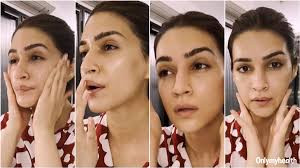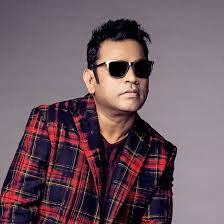Krystle D’Souza Says She Started Gaining Weight After Hitting the Gym, Calls Her Fitness Journey ’

IIE DIGITAL DESK : Krystle D’Souza, known for her glamorous presence on television and social media, has opened up about her unique fitness journey that defies typical expectations. In a recent interaction, the actress shared that instead of losing weight after joining the gym, she began gaining it, describing the experience in her own words: “Ulta ho gaya mere saath.” Her statement has sparked conversations about body image, fitness myths, and the real science behind healthy transformations.
Often praised for her slim figure, Krystle’s confession brings attention to a lesser-discussed but important reality in the fitness world—healthy weight gain. Contrary to popular belief that the gym is only for those trying to shed pounds, Krystle's experience highlights the broader perspective of fitness: gaining strength, improving endurance, and building muscle mass. Her story also challenges the societal obsession with being thin, reminding people that every body has its own health goals.
In her candid revelation, the actress explained that after following a structured gym routine under the guidance of a fitness expert, she noticed her body becoming stronger and more defined—but also heavier on the weighing scale. For someone used to being naturally lean, the shift in numbers initially felt surprising. However, instead of panicking, she embraced it as a sign of progress. “Earlier, I was working out thinking I’ll get thinner. But I started eating better, lifting weights, and building muscle. Now my clothes fit better, I feel more energetic, and I’m finally understanding what fitness actually means,” she said.
Krystle's statement resonates with fitness experts who frequently emphasize that weight is not the sole indicator of health. Muscle weighs more than fat, and gaining muscle through strength training often leads to weight gain, even though the body may look slimmer and more toned. For women especially, this can be a confusing and emotionally charged journey, given the constant pressure to conform to certain beauty standards.
To support her new lifestyle, Krystle shifted her nutrition to align with her workouts. With guidance from a nutritionist, she began consuming more protein-rich meals, healthy fats, and carbohydrates that fuel muscle recovery. She also prioritized hydration, sleep, and mental wellness. This balanced approach helped her develop a sustainable and empowering relationship with fitness.
In interviews and on social media, Krystle has emphasized the importance of self-awareness in any transformation journey. She admitted that while the process initially challenged her old beliefs, it ultimately made her feel more in control of her body and more confident in her choices. “Now I work out for strength, not size. I’ve accepted that weight gain isn’t bad if it’s healthy. It’s all about feeling good from the inside out,” she remarked.
Her honest take has sparked supportive reactions from fans and health advocates alike. Many applauded her for breaking the mold and talking about something that is rarely acknowledged in public. Especially in an industry that often equates thinness with success, her openness is a refreshing shift toward body positivity and realism.
Krystle D’Souza's journey reminds us that fitness is not a one-size-fits-all process. Gaining weight can be a positive result when it reflects increased muscle mass, better stamina, and improved health markers. Her story encourages others to listen to their bodies, set personal goals, and redefine what success looks like in the gym and beyond.
By embracing her unique path and speaking up about it, Krystle has sparked a necessary dialogue about how we define and measure fitness. As she continues to grow stronger, both physically and emotionally, her fans are likely to follow her lead—not just toward the gym, but toward a more accepting and holistic view of health.
You might also like!














